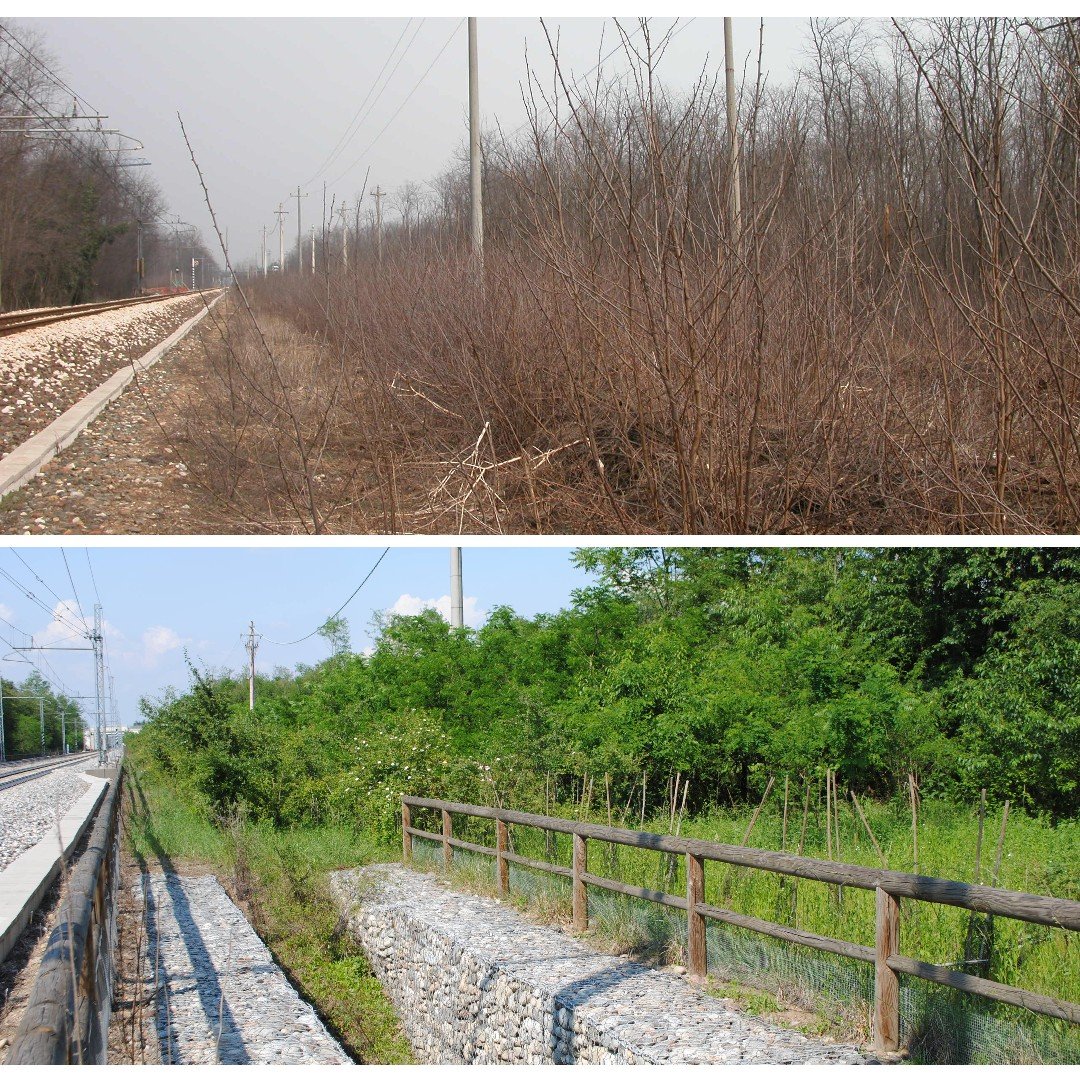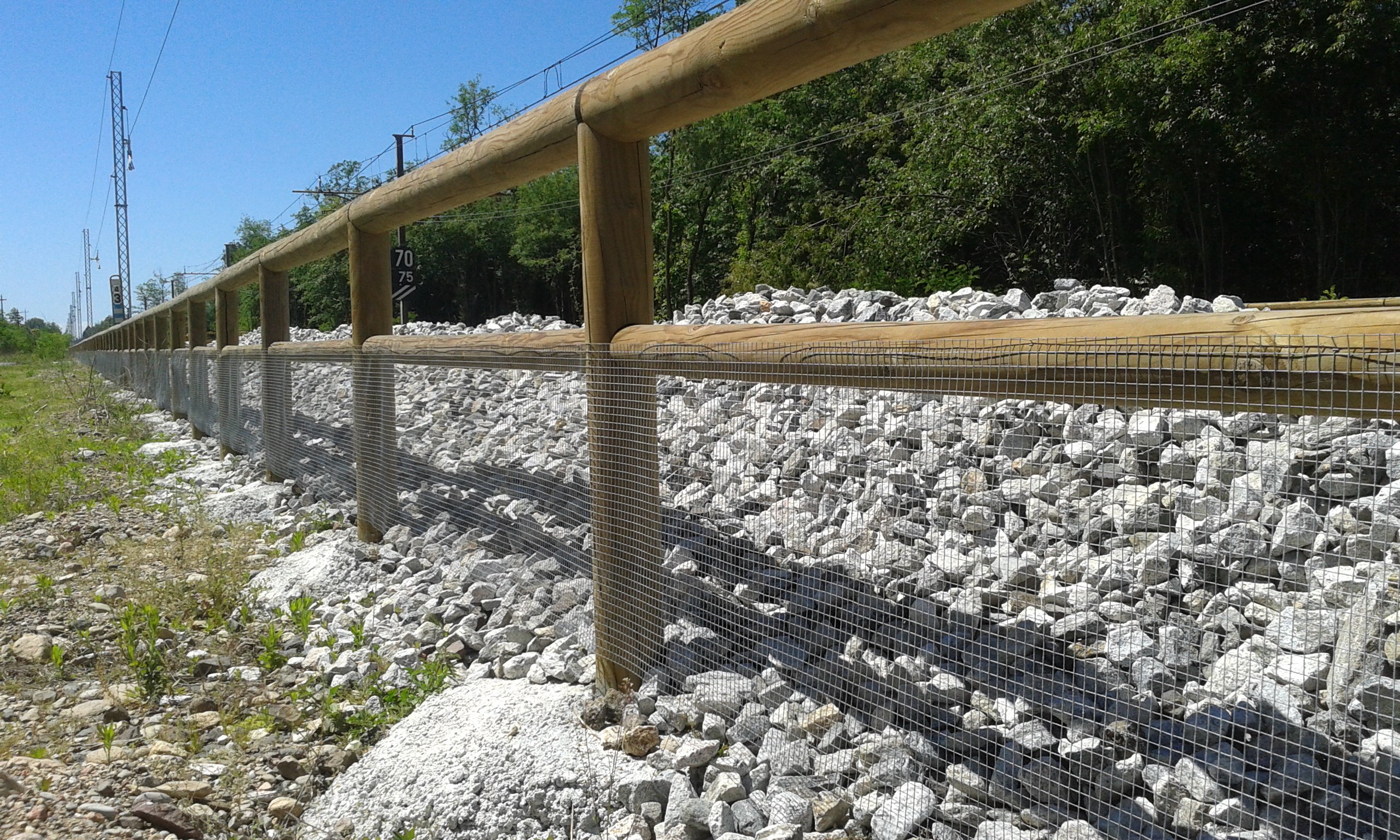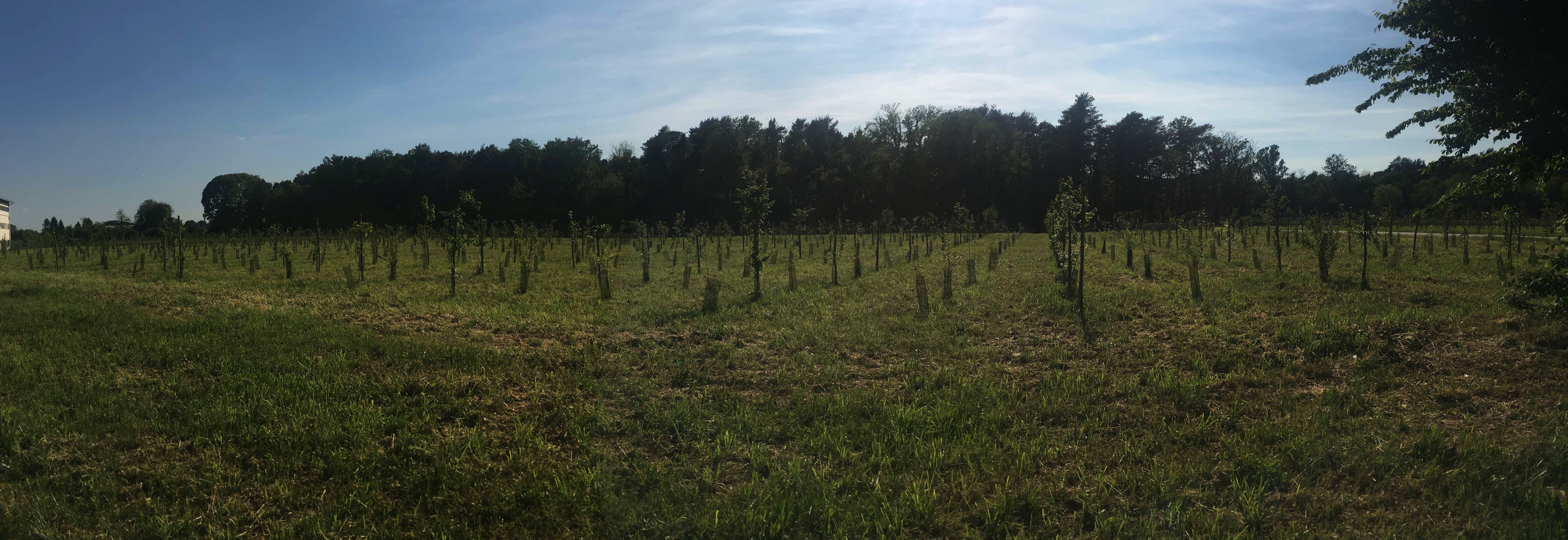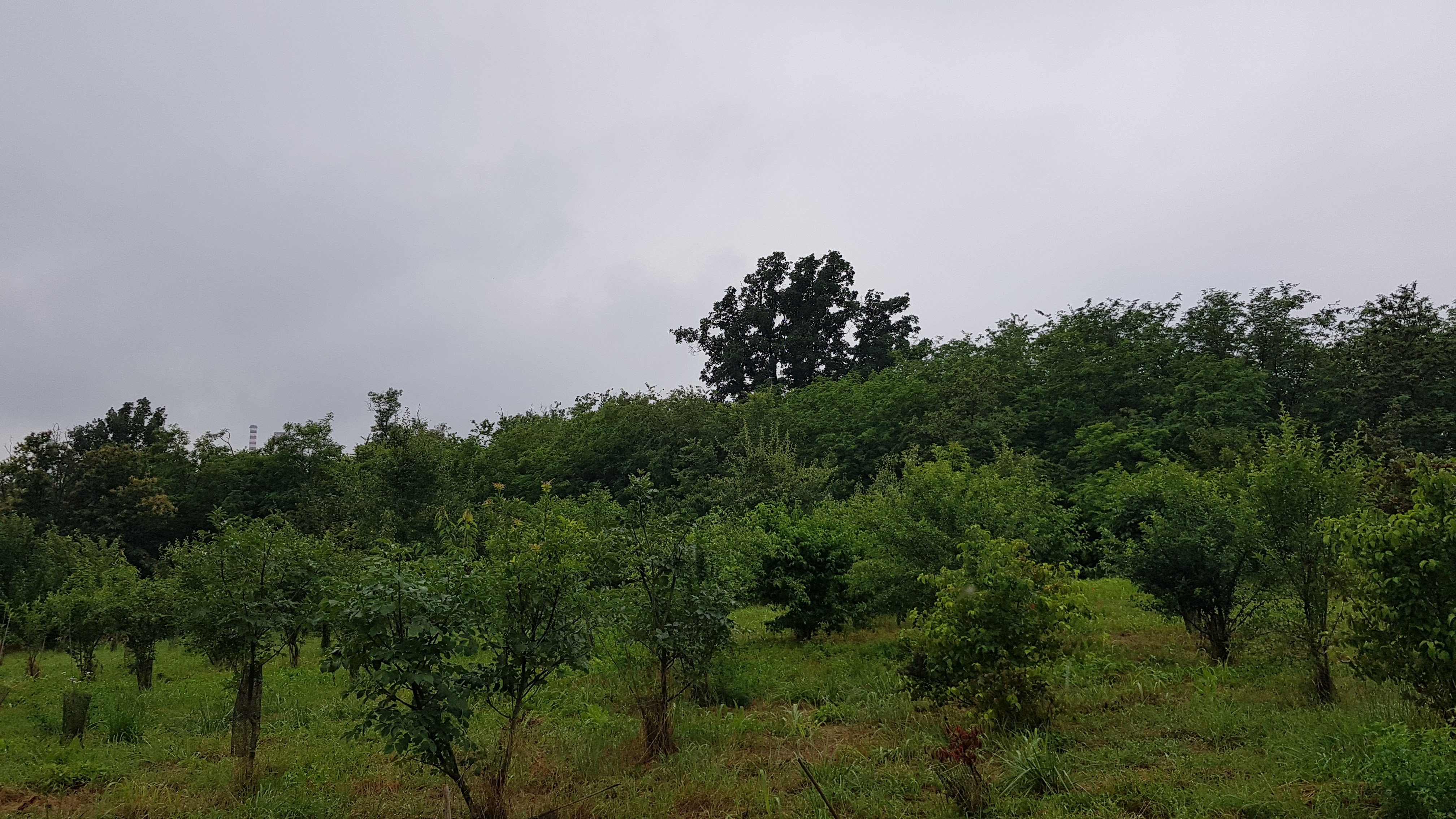
N03 - Castano Turbigo
During implementation of the project to upgrade the Castano-Turbigo section, several offsetting works were carried out in order to protect biodiversity. In particular, a wildlife corridor of around 100 m was created in the forest of Costa Turbigina, and work was carried out to increase the permeability of the area. In addition, interventions were carried out on the North-South axis in the two areas of the project and East-West in the Forlanini area, creating wildlife corridors under the roadbed and trackbed, at the points where traffic is heaviest.

The work was combined with the implementation of reforestation in linear arrangements, and the creation of patches of landscape to allow wildlife to move in well-protected conditions. The forest of Costa Turbigina wildlife corridor passes over the road, which is in a cutting at that particular section. To encourage the passage of small mammals and amphibians along the corridor, the fence was fitted with a wire mesh. 17 crossings were created (totalling around 310 m in length) by laying concrete pipes with a diameter of 50-80 cm with the aim of making the road as permeable as possible. The underpasses were sized according to the wildlife present in the area and in particular for small and medium sized animals which usually burrow underground. The wildlife corridors were designed in terms of their position in relation to surrounding habitats, placing the focus on potential routes for the movement of wildlife.
Gallery

The railway trackbed on the Castano - Turbigo section before and after work to create the wildlife corridor 
The side of the trackbed, separated by a new fence with mesh, underneath which are the wildlife corridors 
The same area a few months later 
Two years later, in 2020: it is difficult to tell the new trees from the rest of the forest